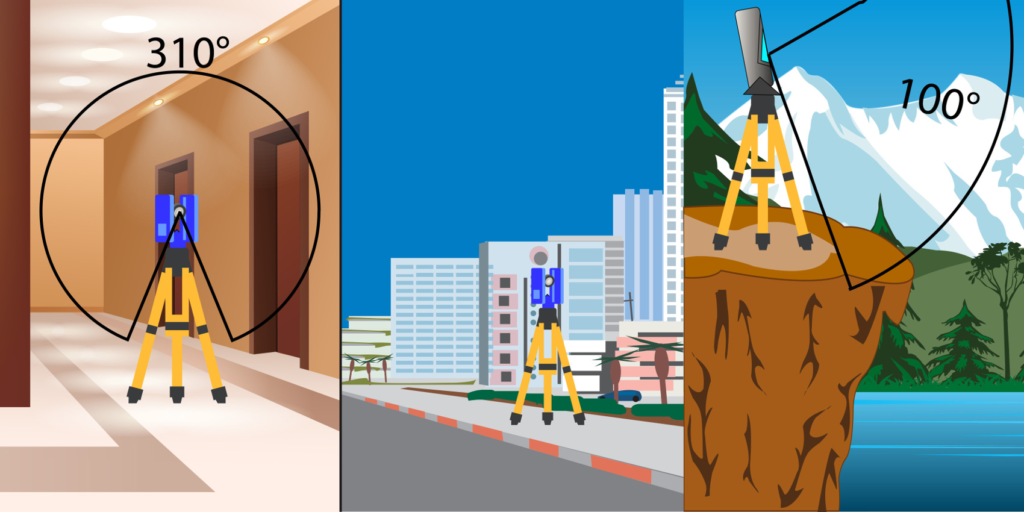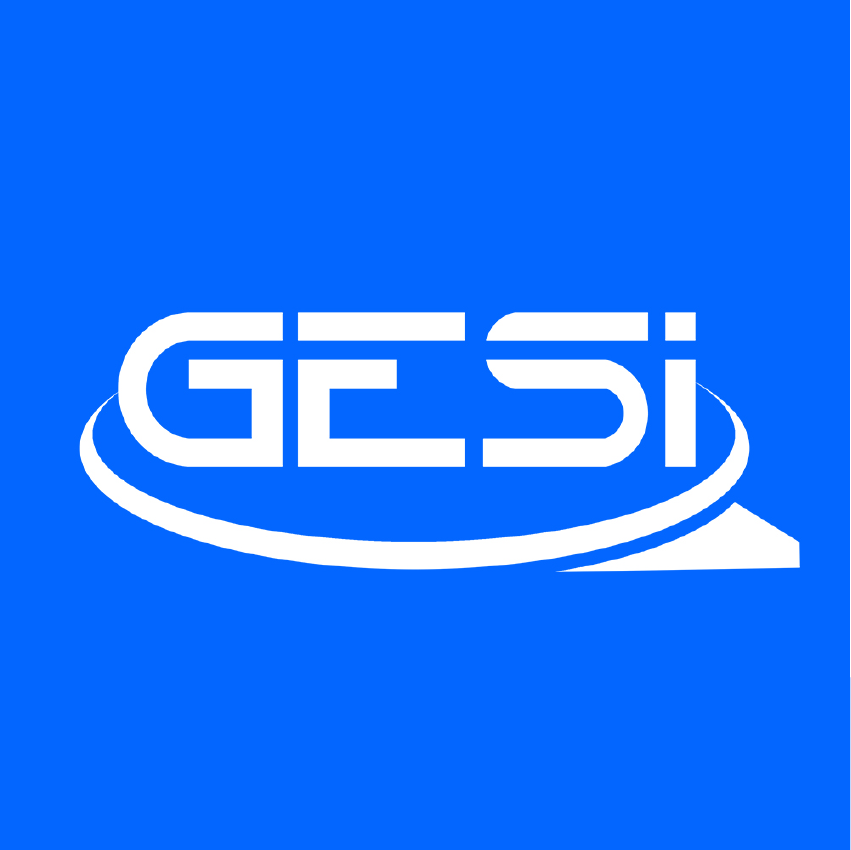Laser scanners are instruments capable of capturing at high speed the surrounding reality in the form of three-dimensional points in space. These points compose a collective datum called the point cloud, composed of thousands or millions of individual points that are discontinuous with each other and organized in rows and columns so that each point can be associated with a regionally close surrounding of points. This organization makes the point cloud a structured cloud.

Laser Scanners generally consist of a body capable of rotating horizontally and a mirror that allows the laser beam to be deflected by varying the vertical angle very quickly within the structural limits of the scanner: some scanners can only compose vertical windows of 70-100 degrees, while others can go up to 310 degrees. Given the presence of the topographic tripod, it would be unnecessary to increase the vertical angle beyond 310 degrees.
The duration of a single scanning operation can range from a few seconds to several minutes, depending on the density of points detected and, of course, the speed of the laser scanner.
Density is a configurable datum and is used to define with how many points to discretize a surface at a given distance; however, it affects the scanning speed and the number of total points that make up the area.
Here is an example:
[table id=1 /]
During the scanning operation, the device saves the angular data, distance and reflectance which, will be the higher the more the surface tends to white. Reflectance indicates the proportion of incident light that a given surface is capable of reflecting. It therefore has a definite physical meaning and its value is related to the characteristics of the material of which the scanned surface is made.
In order to give a more realistic effect to the scanned relief, it is possible to use a colorimetric datum that is not reflectance-based but photorealistic.
To achieve this, appropriately calibrated photos must be superimposed on the scan using homologous points, so that a spatial and photorealistic result is obtained.
In general, this technology is always based on emitting and receiving a beam, the various laser scanners differ in operating principles of operation. Basically, there are 2 types of laser scanners used in the field of surveying:
- Phase-Shift
- Time-of-Flight
Phase Shift (PS) Laser Scanners calculate distance through specific algorithms that detect the measurement by the phase difference between the emitted and received wave. These laser scanners are particularly fast and have a very dense grid of points. Their ability to phase shift, however, limits the maximum range to a few hundred meters. A typical speed of these scanners is around 500,000 points/second.
Time-of-Flight (TOF) laser scanner technology is based on the time the wave takes between the instant it is emitted and the instant it is received: it is a highly accurate stopwatch. The typical speed of these scanners depends on the maximum range; we can indicate 200,000 points/second for a range of 6Km. These scanners support detection at very high distances this however, can particularly slow down the speed of operations: when the scanner points into the void (into the sky for example) and is configured to detect up to 6Km, this means waiting for the speed of light to travel 6Km outward plus 6Km return. Although this is 0.00004 seconds per single point, the reiteration of this time interval for a few million points can lead to waits of minutes and fractions of an hour.
In fact, if there are 50 million sky points (compatible with a typical survey scene) for the max 12Km (between round trip), in total this is 600,000,000 km equal to 4 Astronomical Units (AU) or 4 times the earth-sun distance, basically more than 30 minutes of waiting time!
TOF Laser Scanners having characteristics of speed, density and amplitude of area acceptable purely for distant scanning, do not achieve, in short-distance work, a result comparable to that of Phase Difference Scanners. On the contrary, phase difference scanners cannot reach the range of Flight Time Laser Scanners. In practice, these are 2 totally different instruments with complementary vocations.
In the previous section, the characteristics of range and speed in acquisition for different types of laser sensors have been highlighted, but there are numerous other aspects that need to be considered in order to determine the quality of a laser scanner instrument for detecting a particular object:
- acquisition speed
- scanning resolution (point density)
- possibility of recording the colorimetric data
- coaxiality of the colorimetric data
- measurement accuracy
- accuracy in reflectance
- laser beam divergence
- rated flow rate and in real applications
- minimum and maximum measuring range at the desired accuracies
- maneuverability


